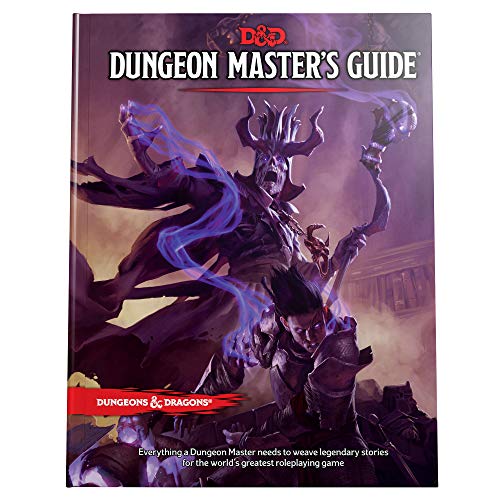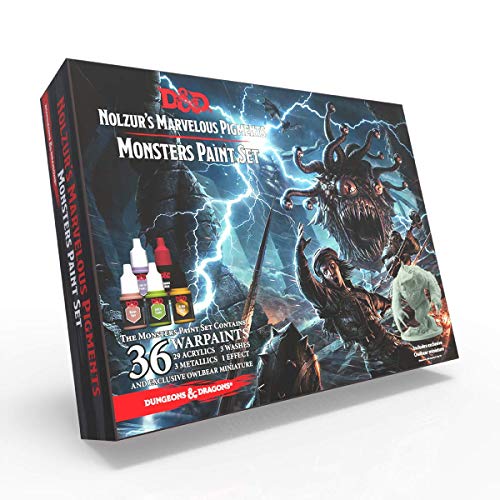dungeons & Dragons essentials
If you're starting your adventure of being a Dungeons & Dragons player or Dungeon Master and seeking to get all of the necessary things, this guide is for you to get you started.
first Things first…
When you're fresh new at D&D, the first recommendation I have for you is to get the Starter Set since it provides everything you need to try out the beautiful thing that is Dungeons & Dragons. It has dice, character sheets, basic rules, and dice that will be handy in the future, and that is a perfect start for this hobby, in my opinion.
However, if you already tried D&D and looking to step your game up, my first recommendation is to get the Players Handbook and Monster Manual(If you're going to be a Dungeon Master).
Players Handbook contains probably all of the necessary rules for the players and core character classes, races, spells, and many other things. This book is a must-have at the table since if someone forgets a rule or a spell, the Handbook is there to remind you of everything, and most of the time, it's going to be going through your party hands to check something. So if you need to choose one, Player's Handbook is the most valuable resource at your table that you can have at the start.
The second book I would recommend(If you're going to be a Dungeon Master that is) Monster Manual because it contains the majority of monsters that help you make encounters and, more importantly, if you're running the game - ideas for your combat encounters. This book, I think, in the Hierarchy of D&D books, always stays at the second place since it provides incredible value for the dungeon master, even more so than the Dungeon Master's Guide.
BUT, being a Dungeon Master(DM) is not an easy skill to master. Dungeon Master's Guide will help you in your path, especially if you're new at the hobby, with additional rules, worldbuilding, and magical items you could give to your players and not break the game balance. The book contains all you need to know how to be a Dungeon Master to start being one and have the goodies that you will use from time to time in any campaign.
adventure books
Now adventure books are pretty good for those who are still feeling that they are a bit weak in their storytelling or still looking for a structure to base your homebrew campaigns. Having at least one of these books still provides tremendous value because they contain many well-designed encounters and structured stories to tell. So if you don't have the time to build your world or need some extra encounters when you are out of inspiration juice is incredibly beneficial for your Dungeon Mastering.
These are my three picks for adventures to start with. Icewind Provides a lot of different encounters and places that you can put in your world and have a decent story to them. Storm King's Thunder is also a great classical adventure book that personally has the most vanilla fantasy feel, at least to me, which is great to start with. Now Curse of Strahd is my and many people’s favorite since this book provides a great package of everything - a great story, incredible charming villain, and an incredible setting to play in.
Supplement books
Now, after having a bit of fun with the core books after some time, you'll be searching to expand your D&D book collection, and this is the point where supplement books appear.
Volo's Guide to Monsters and Mordenkainen's Tome of Foes are a no-brainer for any Dungeon Master. However, I think you should first start your way with Volo and then get the Mordenkainen since Volo has many interesting additional monsters that are ranging from low to higher tier of play, while Mordenkainen's Tome of Foes primarily focuses on the High to End game monsters and both have their place in your collection.
Now if you're a player trying to expand your character creation abilities and have just something more in that case, Tasha's Cauldron of Everything and Xanathar's Guide to Everything are decent choices to consider. Now I don't think there should be more than one book at the party, because well they will not be as useful as the player's Handbook, so I don't think they are the most necessary ones to get for every player at your table.
Dice
You will need some dice and in the long run, it’s a good investment to get plenty of them, especially if you’re DM’ing.
When looking for quality or something to fit your character thematically, Chessex dice, in my opinion, provides the best variety of quality dice that you can find in the market.
Miniatures
If you're searching for some miniatures or thinking of getting into them, Wizkids Icons of the Realms Starter Set is a great combo with the Starter Set since it has all of the characters in the set and painted ready for your game table.
While if you're thinking of getting into miniature painting, I'd recommend checking out Wizkids unpainted miniatures models since they're ready to paint and represent official D&D universe creatures. The models are crisp and sharp straight out of Monster Manual.
While there are countless alternatives, I think Reaper is probably the best second one. However, if you're just starting with painting, search for their "Black" series, where the miniatures are primed for painting. They do provide more flavourful models and variety is always good when it comes to miniatures.
Miniature Paints
I tried a couple of brands like Army Painter, Vallejo, and Game Workshop ones. All of them have something to offer, however, I would recommend when starting out checking either Army Painter or Game Workshop ones since they are more geared for the new painters in my opinion. I’ve started with Nolzur’s Marvelous Pigments set and I still use it a couple of years later, just because it provided me with a lot of different paints for a reasonable price. So if you’re starting this hobby out, this set it’s one of the better ones to quickly get a proper amount of colors quickly in your miniature painting arsenal.
Now, Game Workshop paints are the bread and butter which I use and tend to expand into, just because in my personal opinion they seem the most “stable” and cover easiest to me. However, to make a decent collection from the start of these paints it’s not as easy, since the kit’s they usually offer in my opinion are not worth the price they are asking, but their base colors and washes are great.
Now I tried a bit of Vallejo paints, but not as much so I would have a firm opinion on them, they are good, but I think if you’re starting out I would not recommend it since it requires more advanced maintenance and skill to achieve better results. Paint thinning and layering is not a thing to worry about when starting out and just grab something to start painting.
washes
For now, I tend to use Games Workshop Washes, since they have a pretty good selection of washes and paints. It’s a long-standing brand in miniature painting communities and I tend to use it for my miniatures as well when working on smaller terrain pieces.
Terrain Paints
For terrain painting, I tend to use cheaper acrylic paints that I get my hands on. I found that Royal Talens Amsterdam Standard brand works really well coating the foam and usually if used generously on monotone color buildings like the “Wizards Tower”, one 120ml tube of grey paints could last me for around 2-3 builds(Which is about 2$-3$ per larger build).
to be continued…
I hope this article helps you navigating on what you should get first and I hope you enjoy this great hobby of D&D. Cheers!

























